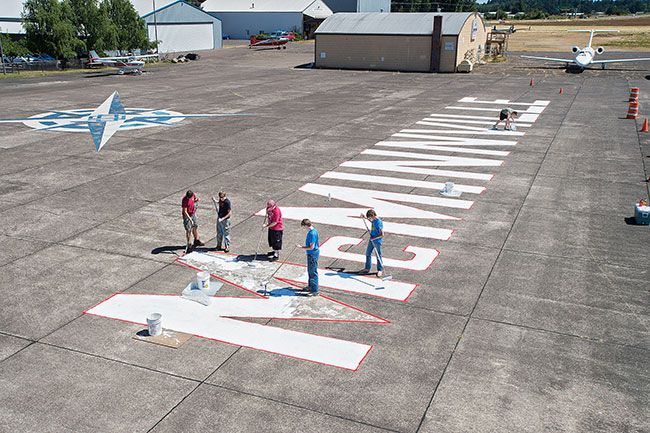No asset in the area offers more potential than airport


McMinnville Municipal Airport is nearing the mid-point of a two-year process designed to produce a new 20-year master plan to guide its future development. And as at least 20-year advocates of greater recognition of and investment in what has to be one of the community’s most under-appreciated assets, we like what we’re hearing so far.
However, hopeful words alone won’t foster the kind of improvements needed to help our little uncontrolled general aviation airport reach its jet-age 21st century potential, or even put it on that kind of trajectory. Seeing those words come true in any meaningful way will require an infusion of cold cash from some combination of local, state and federal coffers.
Our archives are full of editorial expressions of support, including:
“Stepchild airport deserves attention” in 2004. “Airport needs upgrades, focused growth strategies” in 2007. “Airport an asset worthy of serious investment” in 2015. “Airport in need of new support, investment” and “Airport never seems to catch any attention” in 2018.
Perhaps the most hopeful of the lot were the most recent: “Air show could propel airport to new heights” in 2019, and “Stars aligning for airport; it’s time to seize the moment” in 2022.
As it happens, the air show did not seem to propel the airport to new heights, the stars did not seem to align out airport way and we did not seem to seize the moment to make greater investment in local aviation. But we remain undeterred, feeling the value of what may well be the best-positioned general aviation facility in Oregon will eventually get its due.
A number of factors are working in our favor, including:
n A burgeoning high-end wine industry drawing well-heeled consumers with the means to fly in on private planes, both conventional and, increasingly, jet-propelled.
n Associated helicopter and glider operations providing pilot training as well as recreational and commercial options, serving to supplement its array of fixed-wing aviation services.
n Lighted runways with enough length and width to handle even a Boeing 747 in a pinch, and the nearby presence of one of the nation’s premier aviation museums, which sports two such 747s on its premises, in addition to Howard Hughes’ famed Spruce Goose.
n Just the right mix of commercially viable population density and lack of road and air congestion to support major aviation events, which is what drew Oregon’s leading air show to begin eyeing McMinnville as a viable alternative to increasingly congested Hillsboro.
n Plenty of hangar space for lease on its highway-fronting site, with convenient access to both aviation facilities and a rich array of tourism draws, including an abundance of attractive lodging and dining options.
The converted 650-acre military field has come a long way since its acquisition by the city in 1943.
But it has had to rely on revenue from fuel sales, hangar fees, farmland leases, facility rentals, repair services and the occasional Federal Aviation Administration grant. It has hardly ever managed to secure any direct dollar support from the city it serves.
As a result, much of its infrastructure is dilapidated, outdated, cramped or lacking in other ways. It presents a mighty poor face to tourists used to much better in rival tourist towns.
Some 10 years ago, a state Department of Aviation study concluded our local aviation hub was helping support 2,500 jobs, $109 million in payroll and $375 million in visitor spending.
Imagine how much those numbers must have grown by now. Better yet, imagine how much more they could have grown by now, and how much more they could still grow in the future, with accelerated investment.
McMinnville looks longingly at the potential from investment in the old RB Rubber site, new commercial and mixed-use development in the Three Mile Lane corridor, new industrial development in an envisioned tech incubator facility and a makeover for its storied downtown.
Worthy endeavors all, in our view. But no worthier than investment in an airport that has seen precious little of it over a span of more than three-quarters of a century now.










Comments